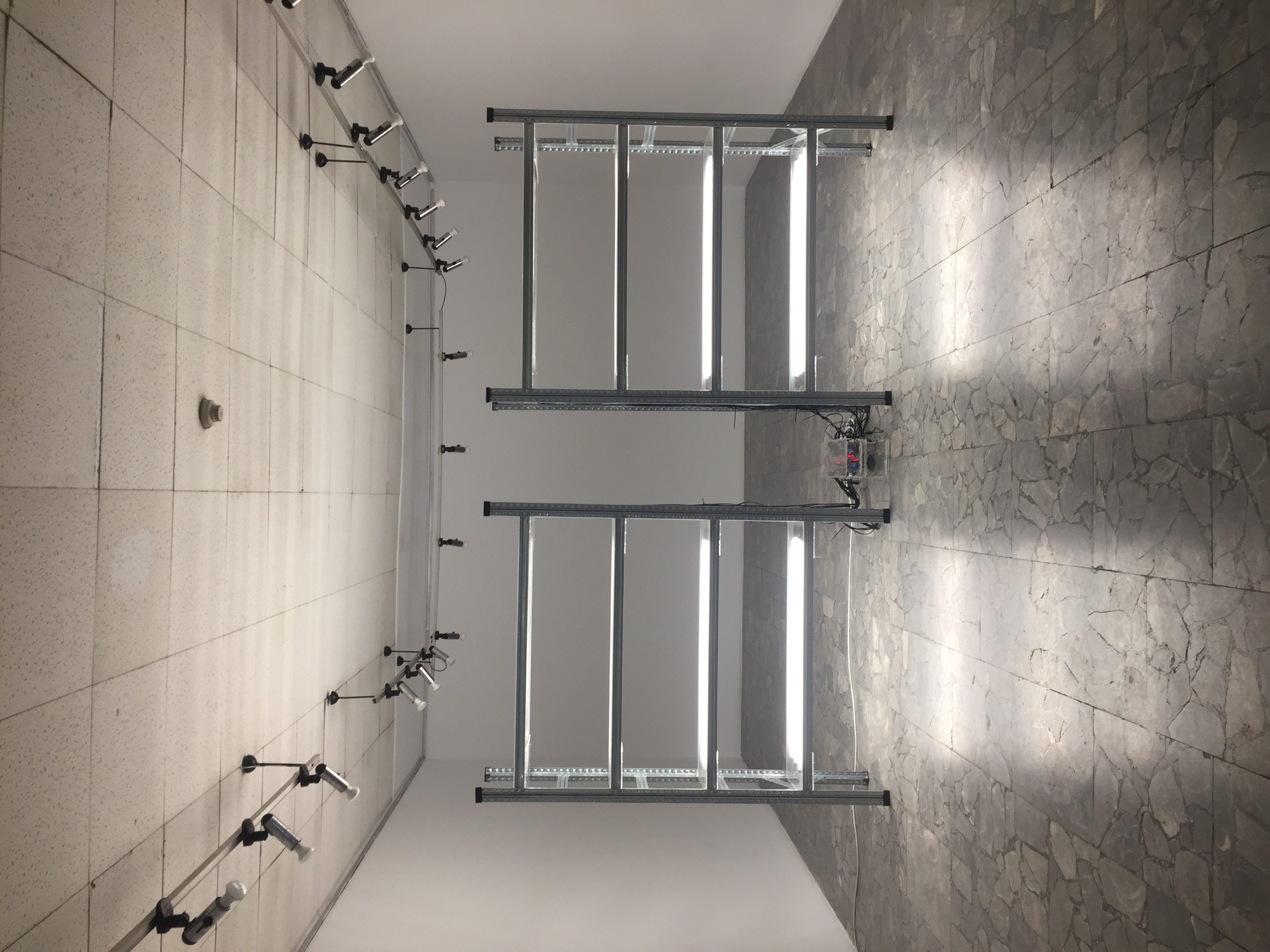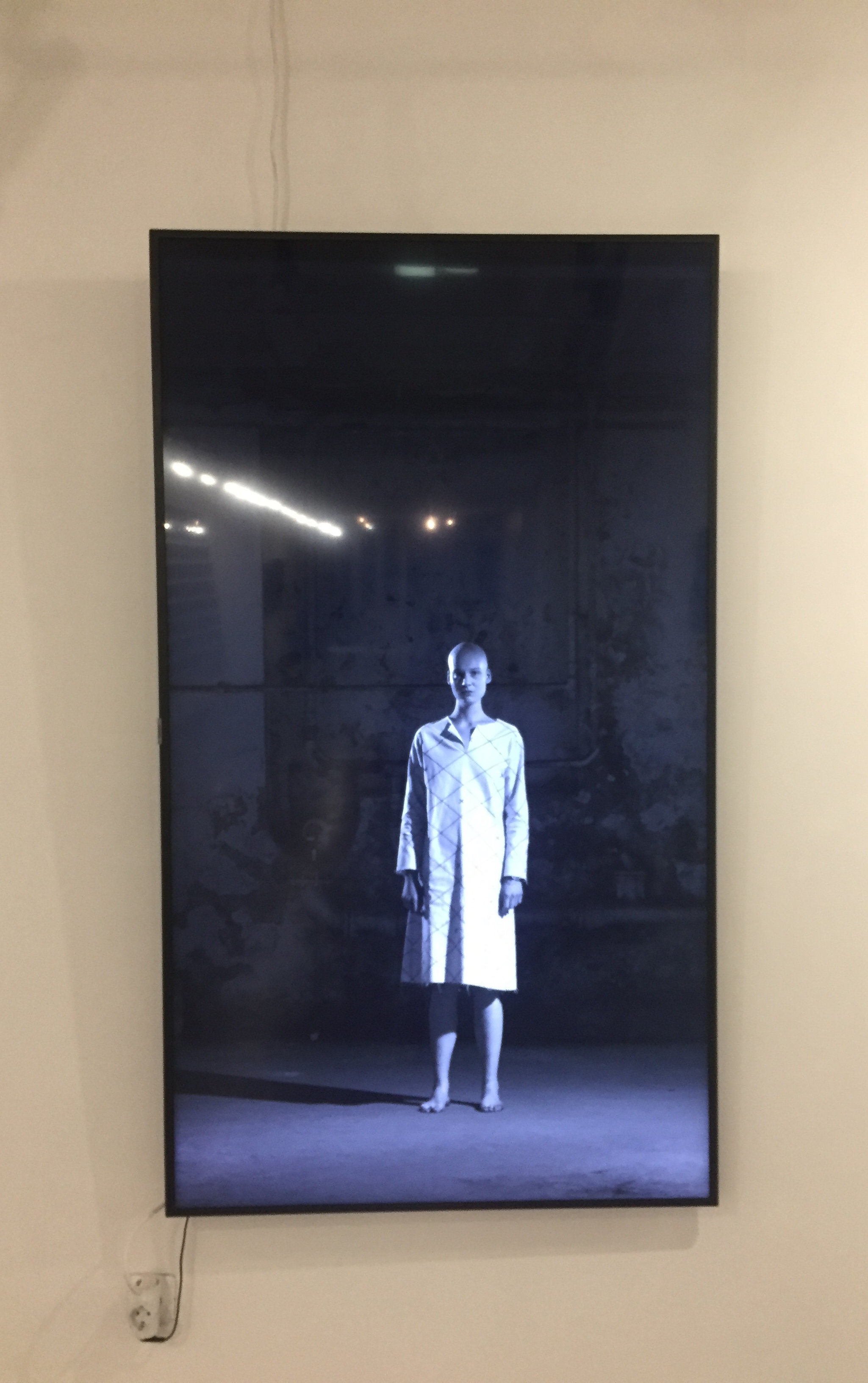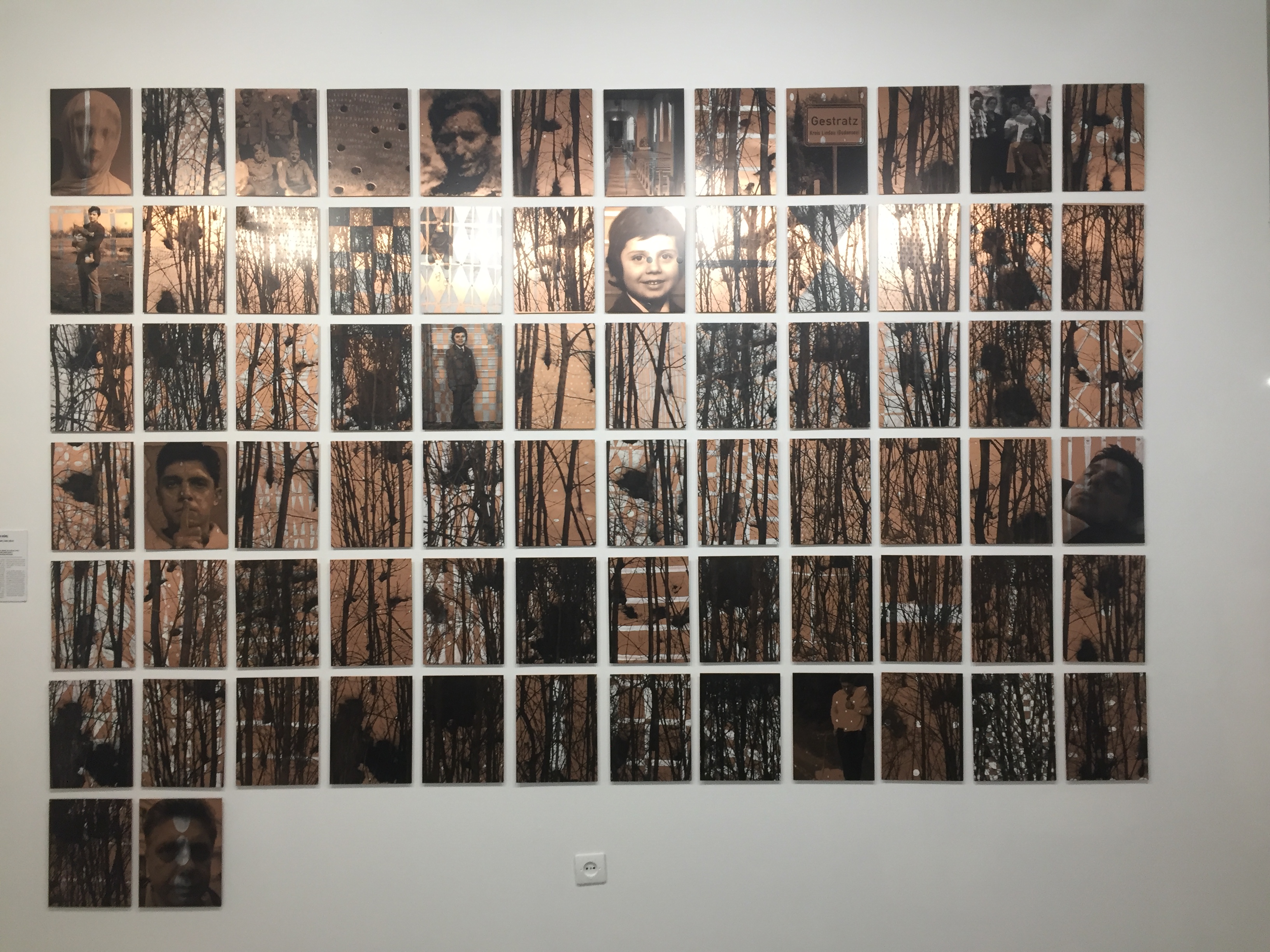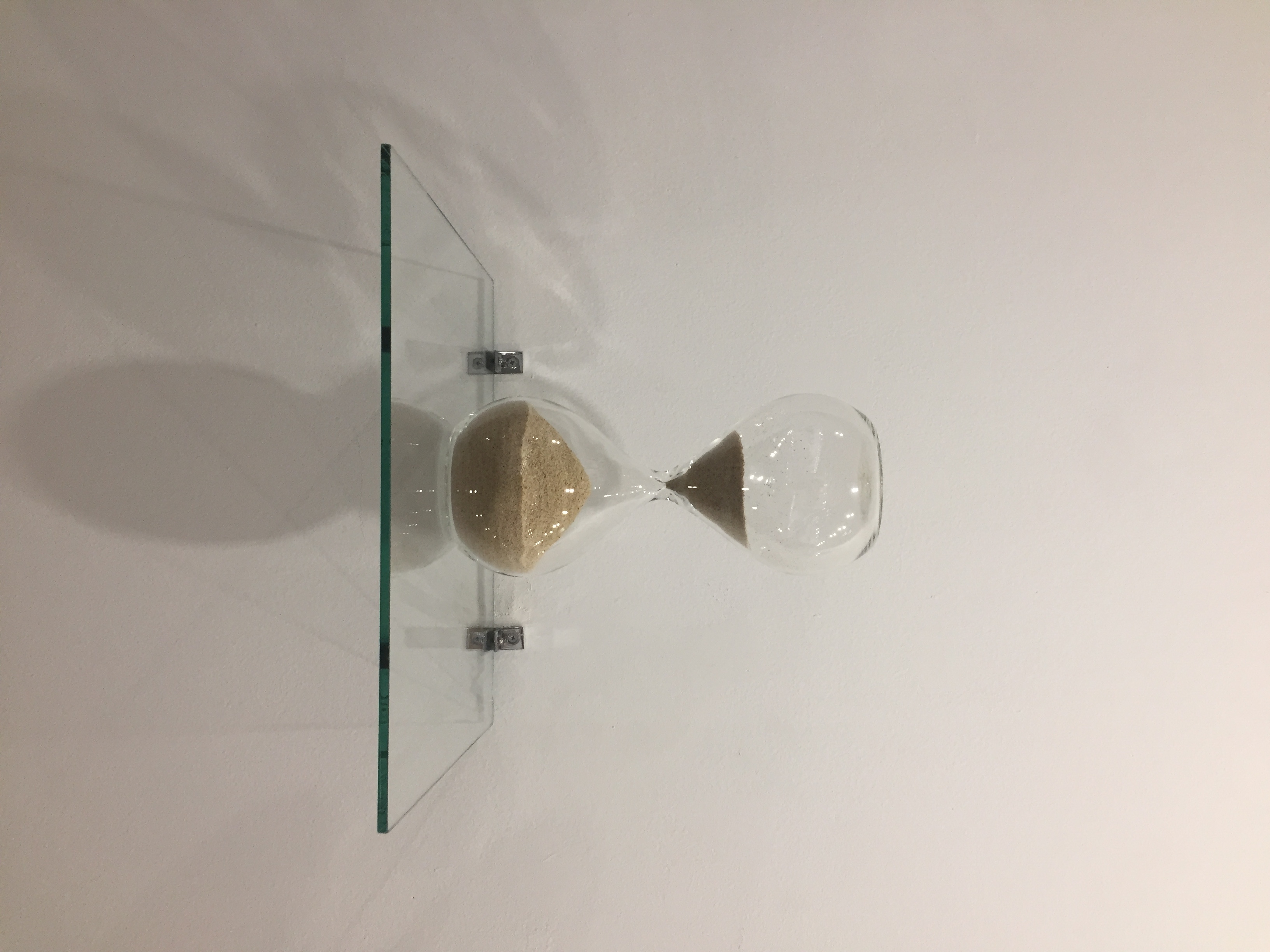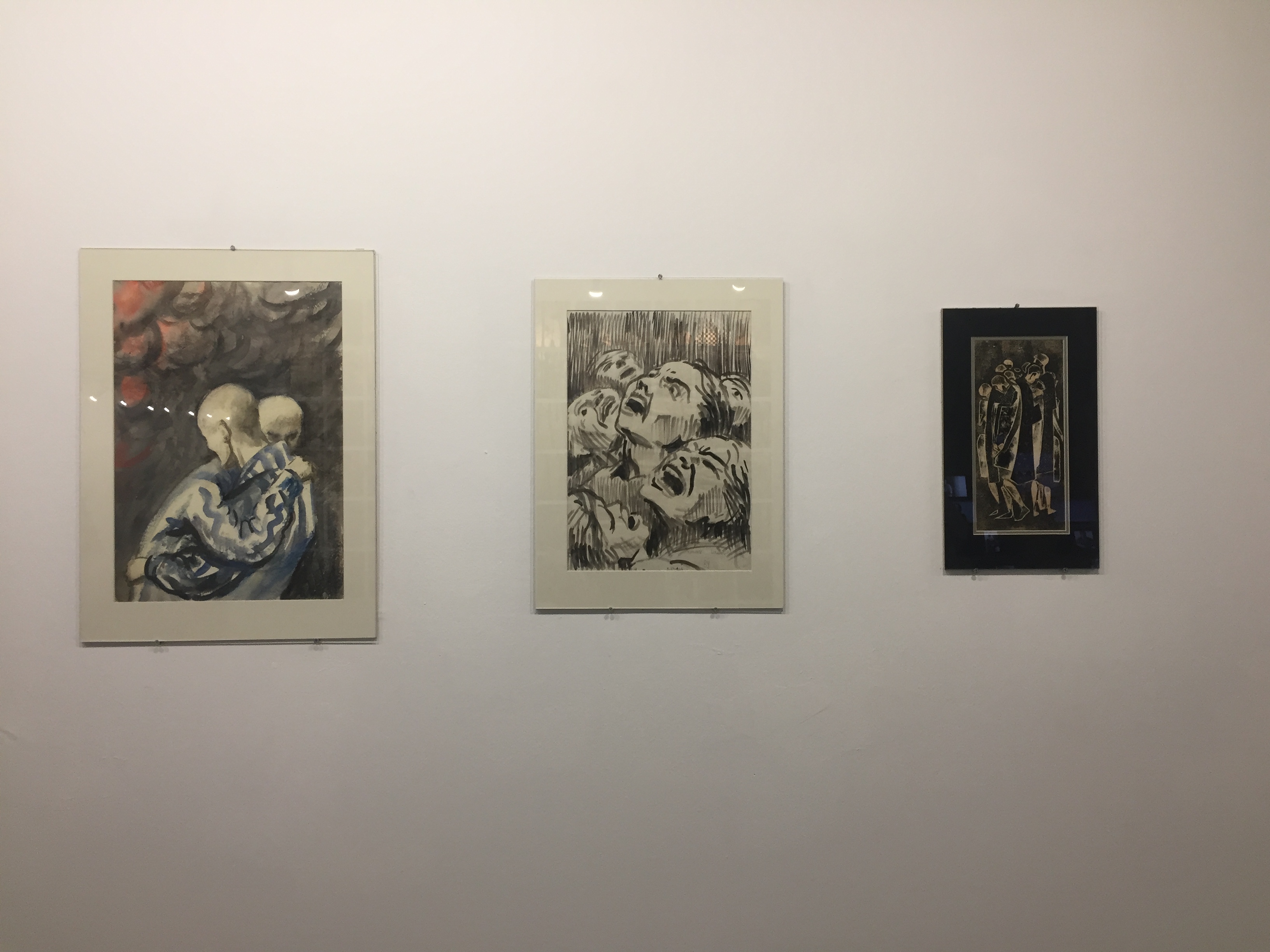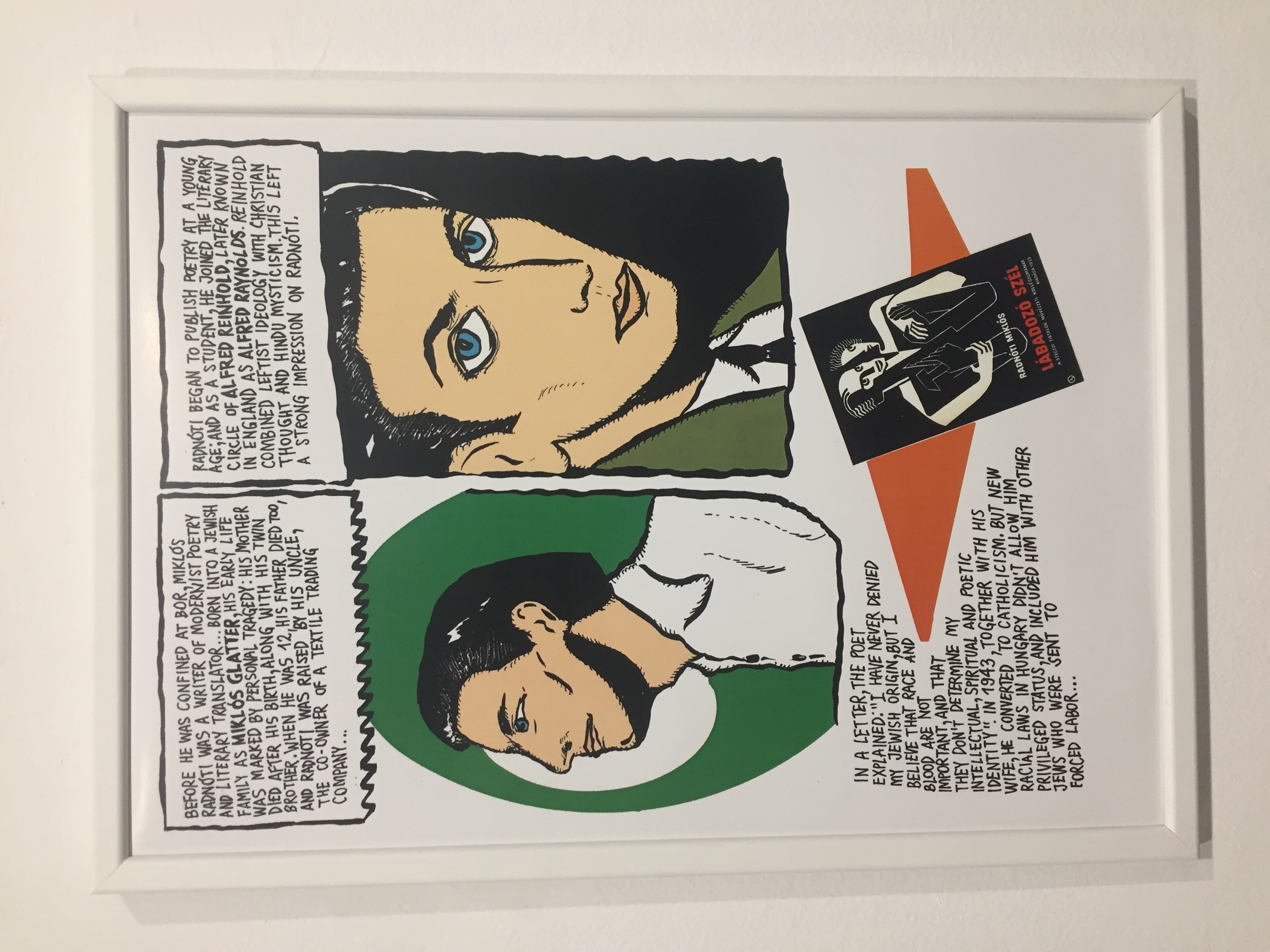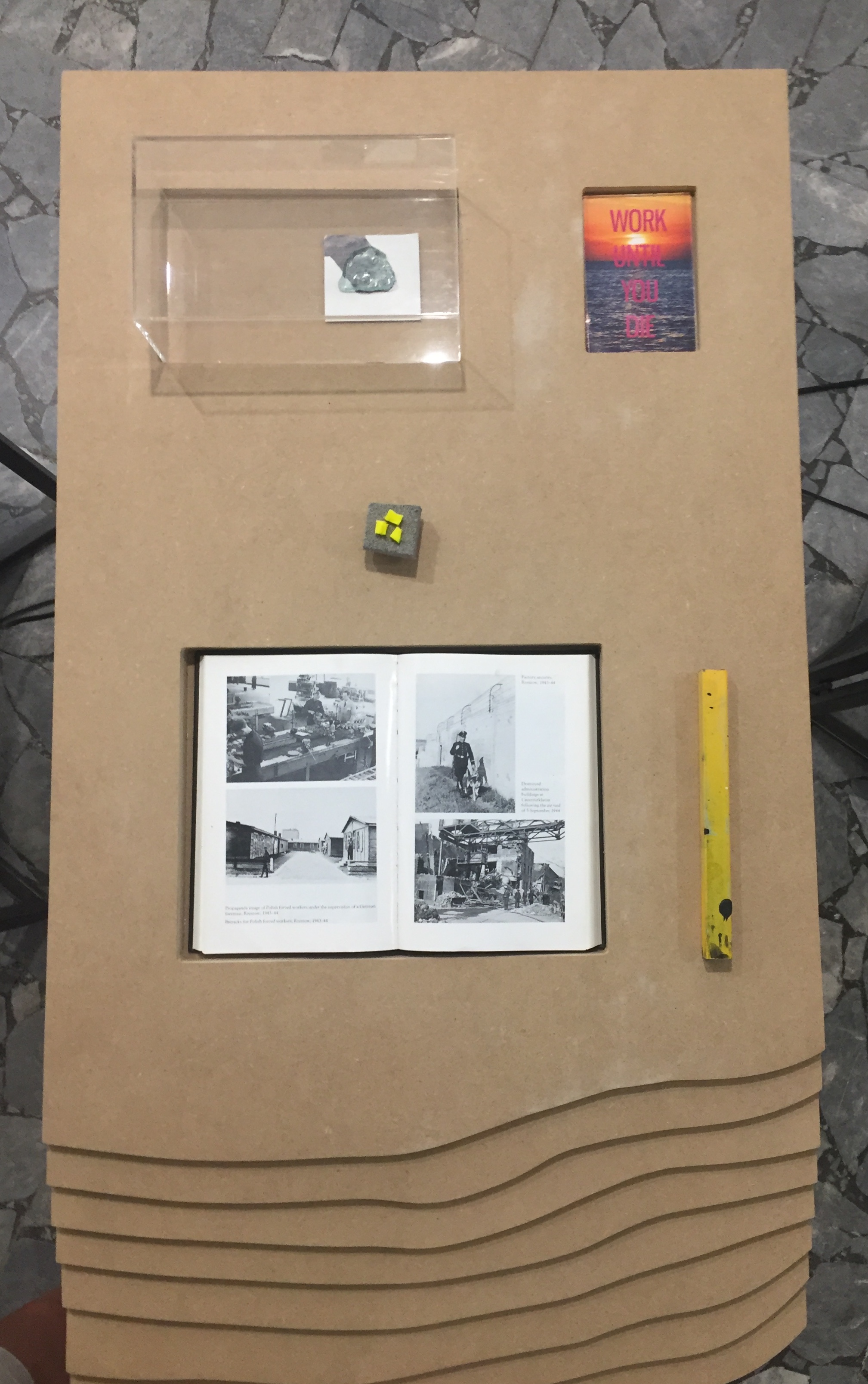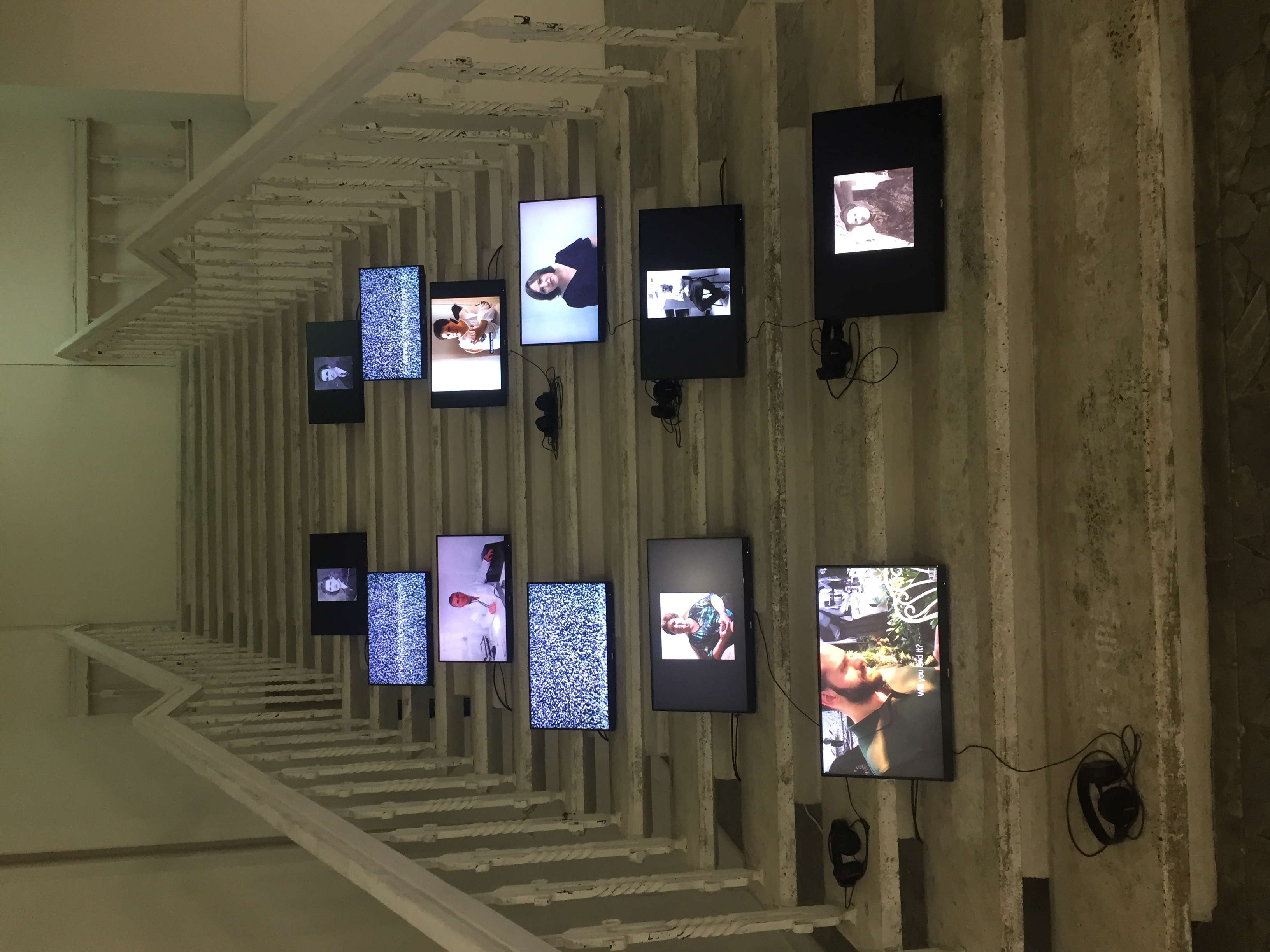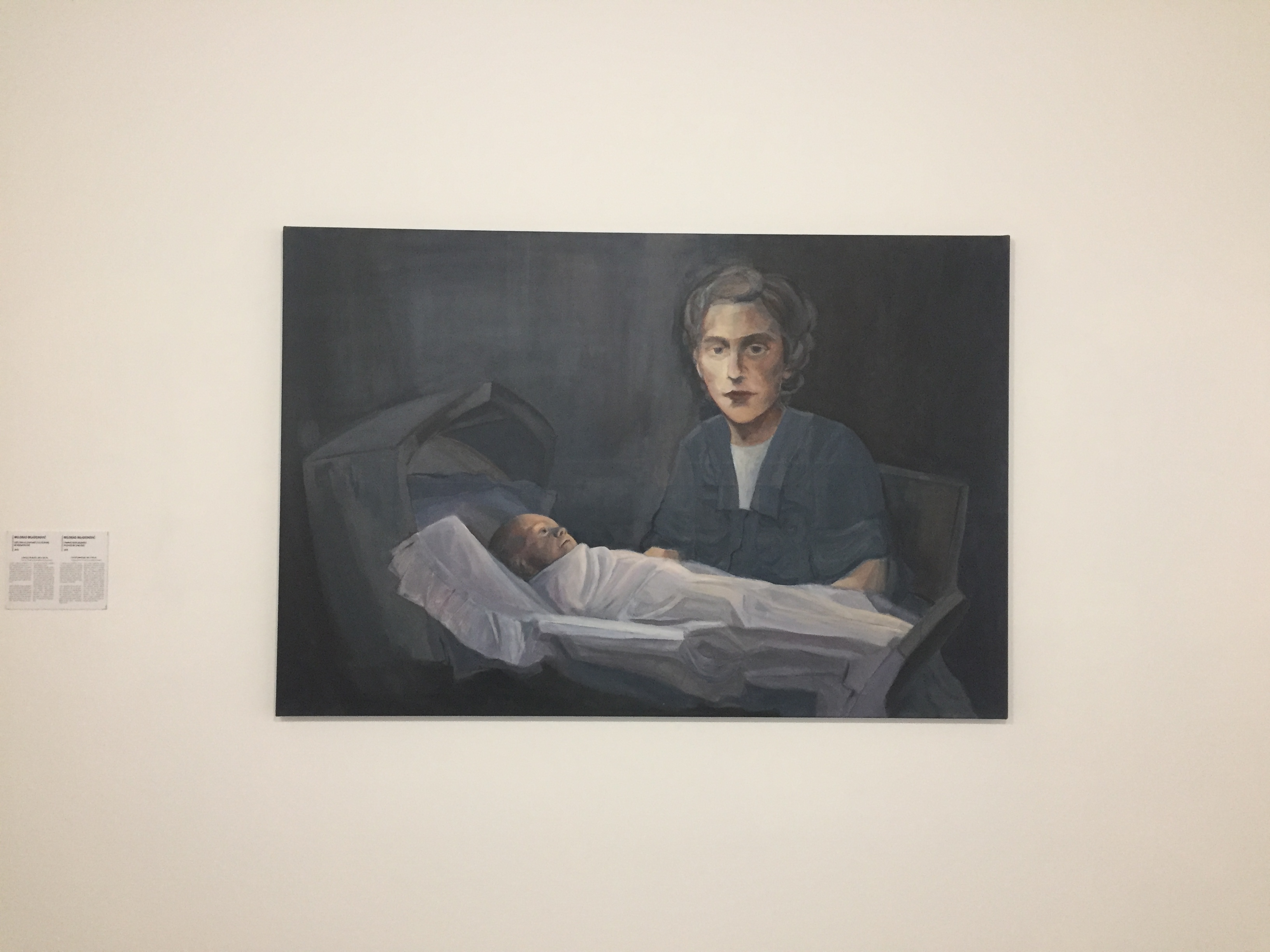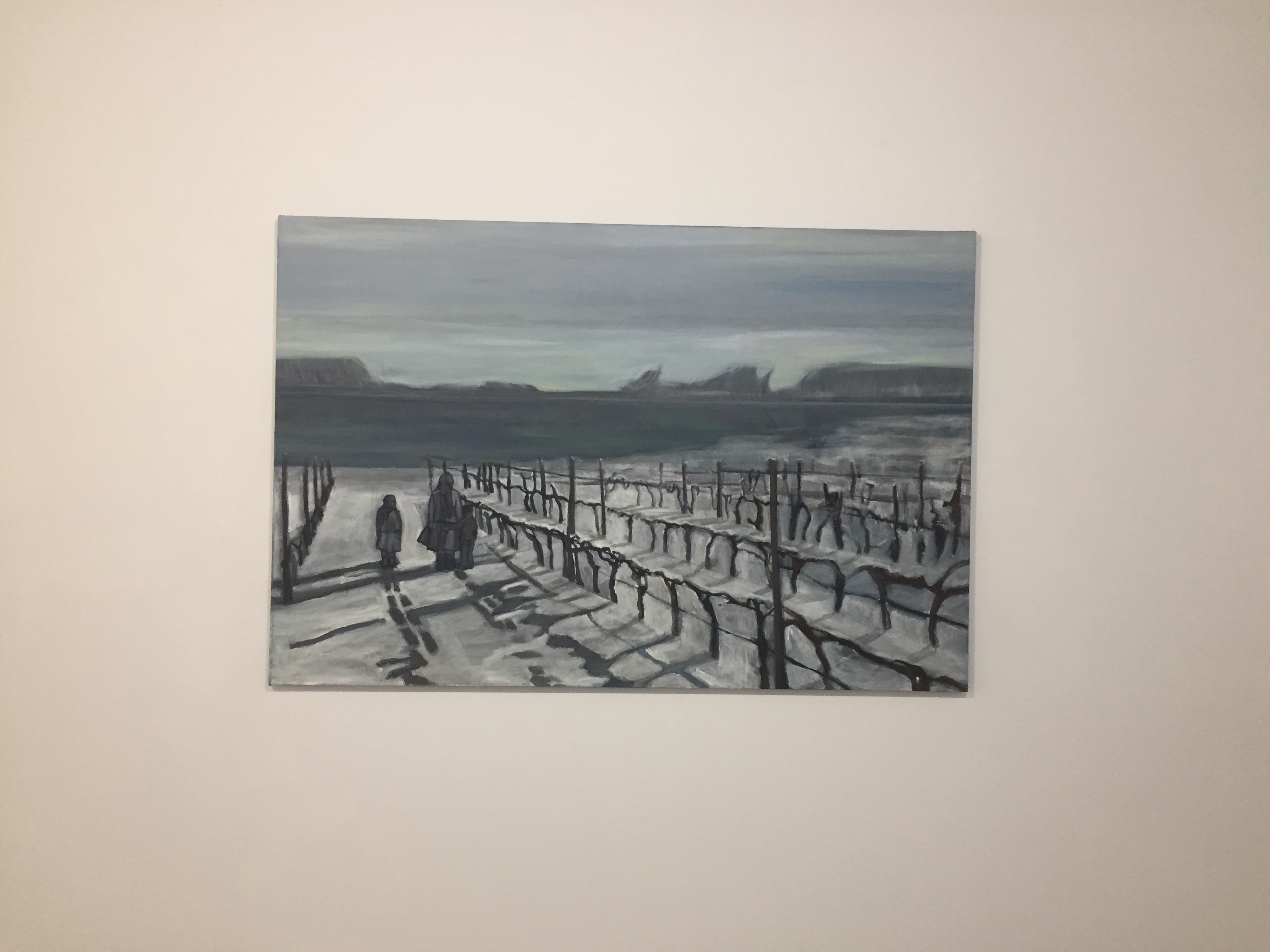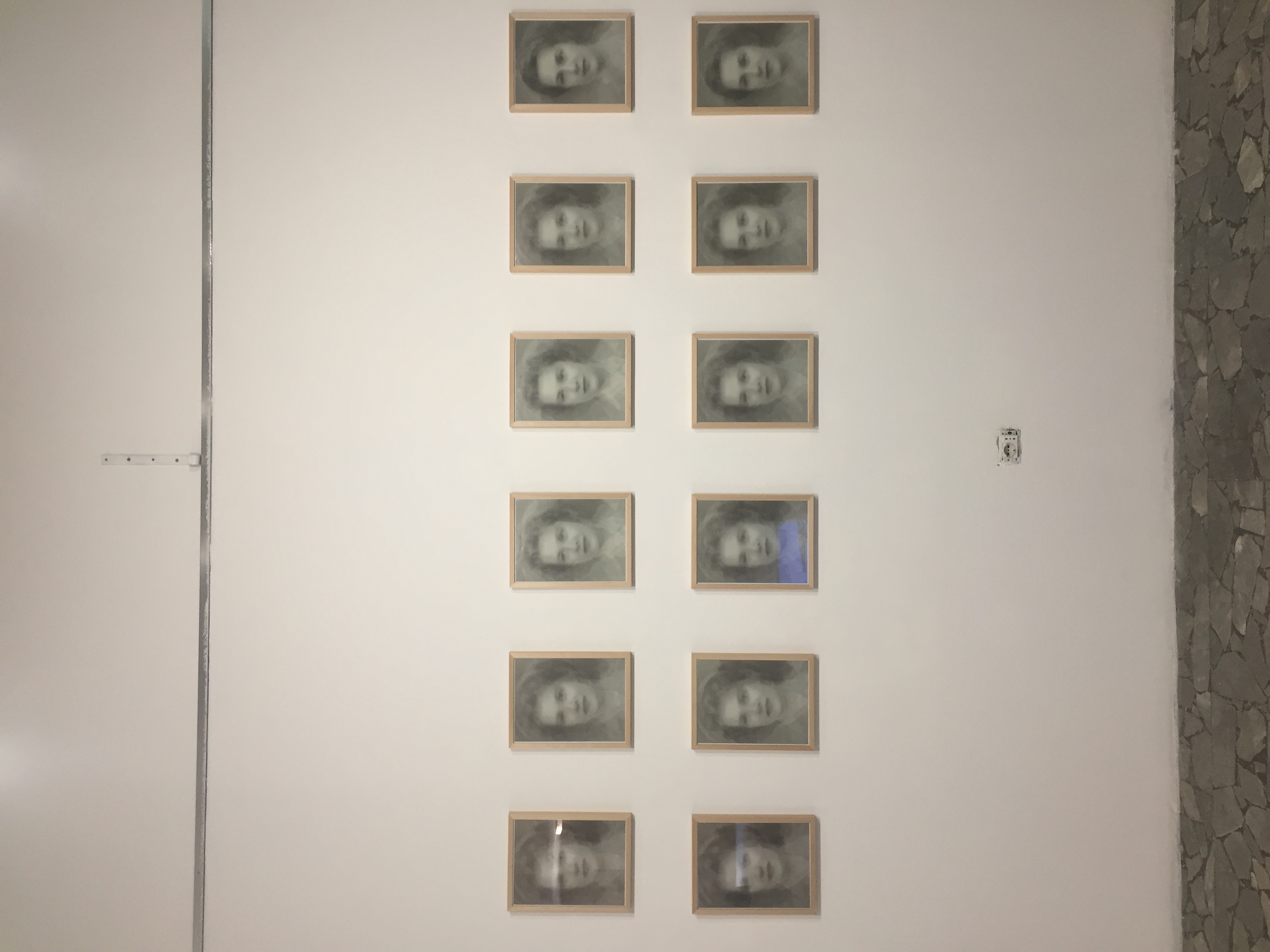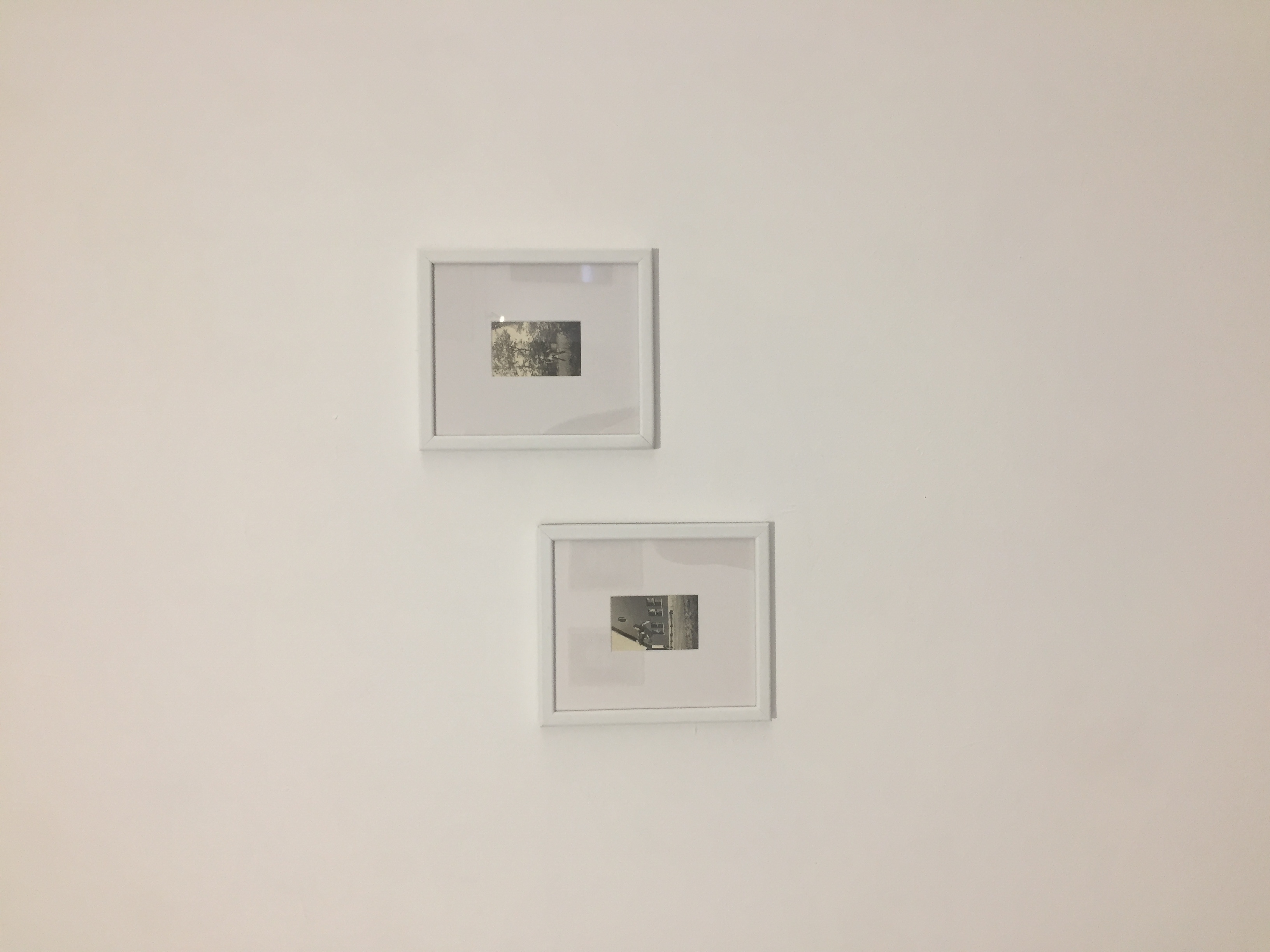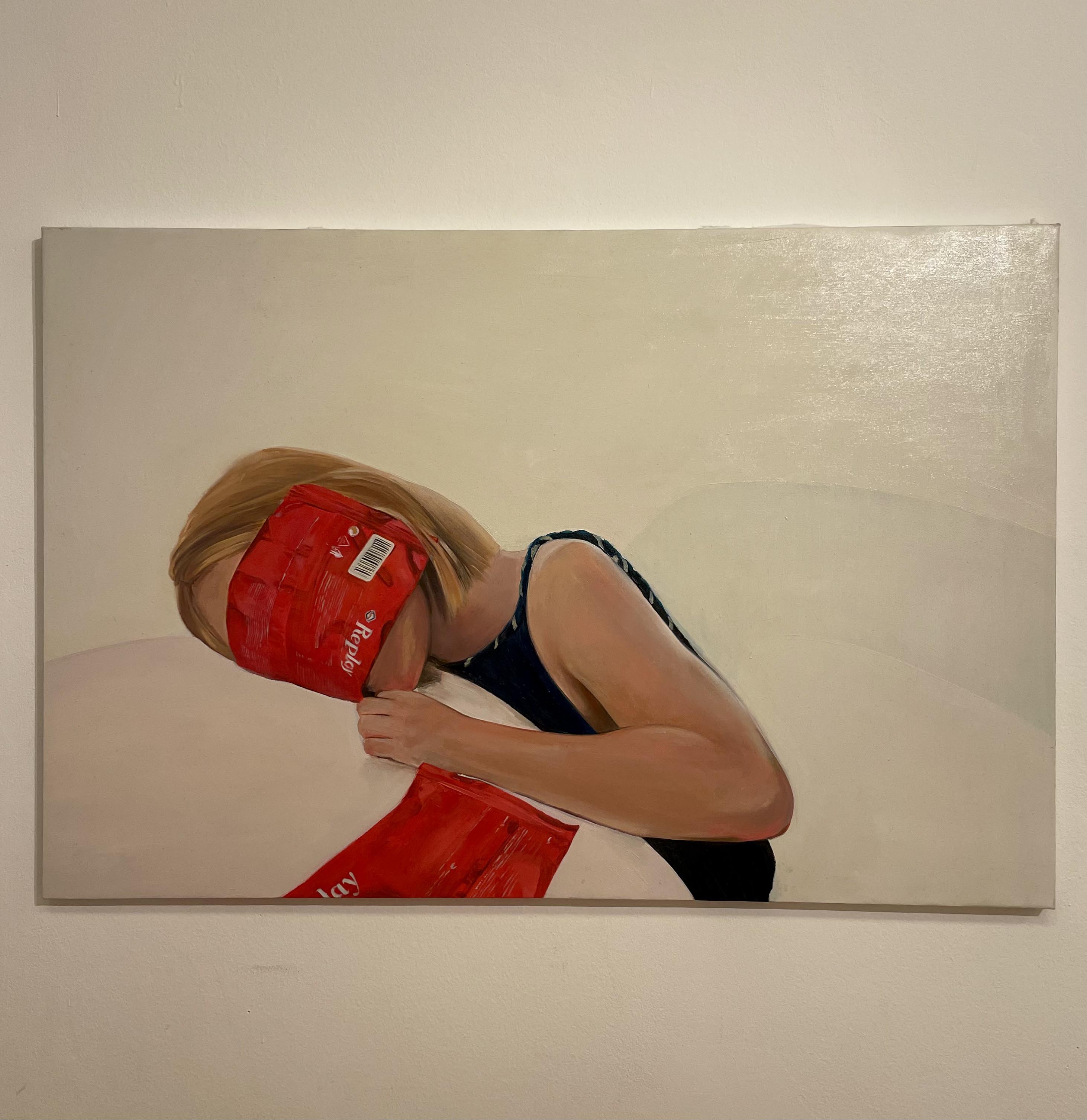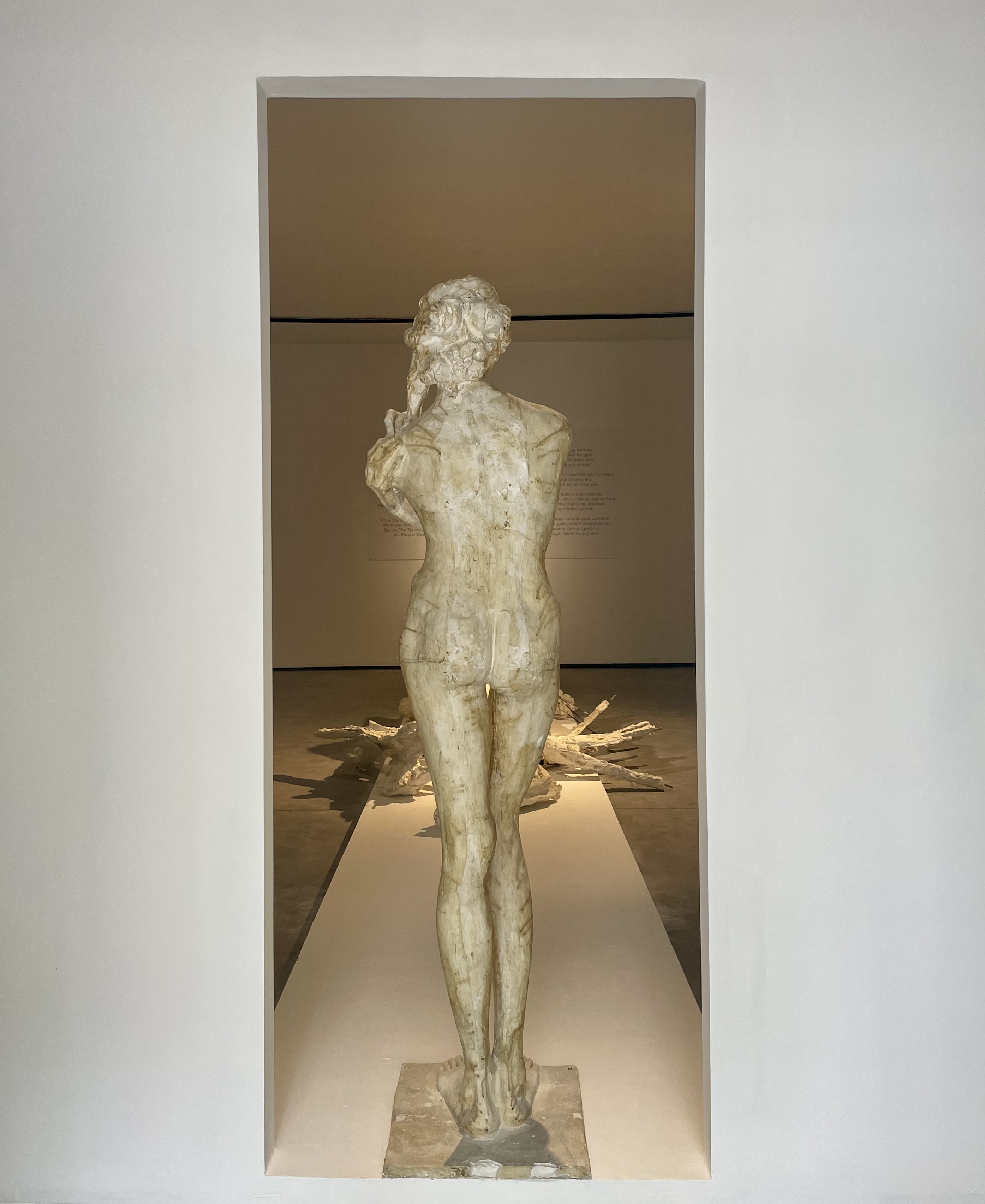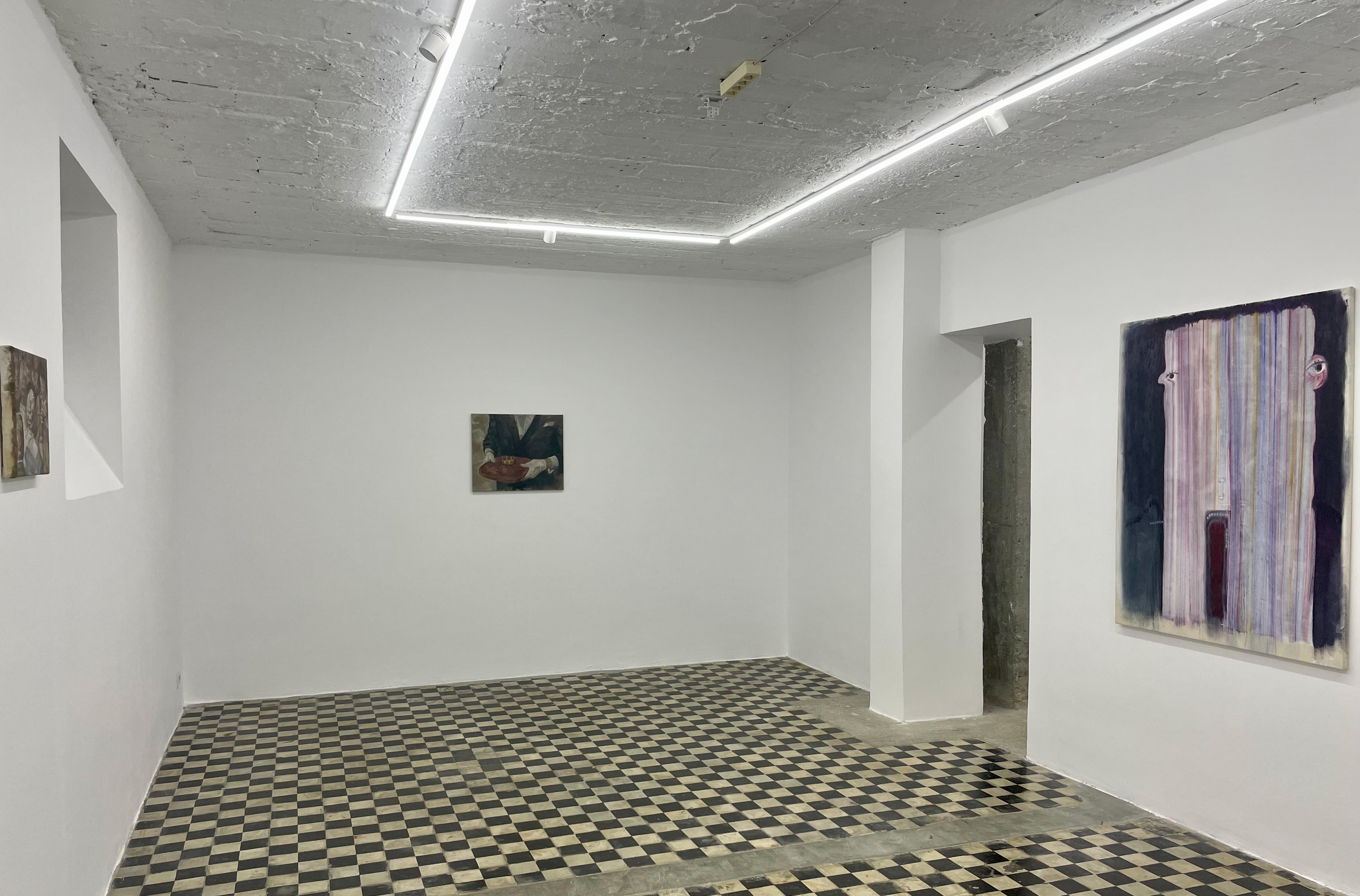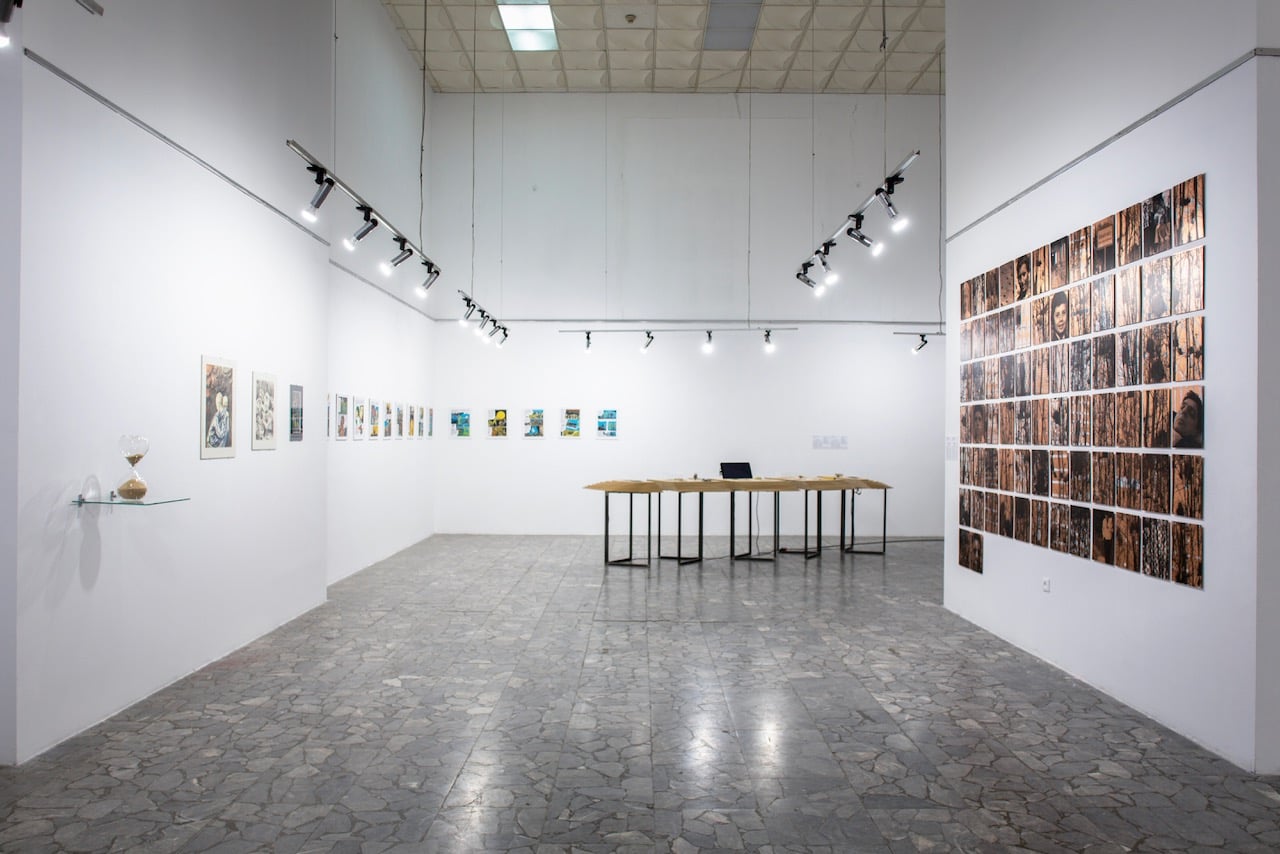
Exhibition / “Missing Stories” / National History Museum / August 8th – 20th, 2021 / Tirana
Missing stories: Forced labor under the Nazi regime. An artistic approach. ” was opened near the National Historical Museum on August 8 and will remain open to the public until August 20, 2021. Five curators have taken care of the selection of the participating works. They are: Adela Demetja (Tirana Art Lab), Natalija Vujosevic (Institute of Contemporary Art – Cetinje), Sanja Kojić Mladenov (Museum of Contemporary Art – Vojvodina), Thomas Elsen (Center for Contemporary Art – Augsburg) and Una Popoviç (Museum of Contemporary Art – Belgrade). The exhibition contains works that were created during 2019 by a group of artists from Albania, Serbia, Montenegro and Germany. The initiator of this project was the Goethe Institute in Serbia, supported by the EVZ Foundation (German promoter of human rights, in memory of the victims of socialist injustice). During his visit to Serbia, the director of the Goethe Institute, Frank Baumann, recalled the information void on this part of history and saw it necessary to expand the narrative on the World War II with the experiences of the Balkan people. After Tirana, the works will be exposed in Augsburg and Berlin.
The works belong to various mediums, starting from paintings to installations, videos and sculpture. Their role is informative and awareness-raising. They come as a result of a long research work by artists and curators who have exploited the archival assets of the respective states. Numerous materials that helped the realization of the project can be found on the website dedicated to it and in the catalog of the exhibition.
The exhibition is personal, it often transmits stories of family members of the artists and their experiences. The research of the artists is dedicated to the impact of World War II in Southeast Europe and forced labor in nazi camps around the Balkans.
“Postcards from Bor” (drawings) by Aleksandar Zograf (Serbia), is a series of 14 color drawings in the style of comic books, dedicated to the life and death of Jewish-Hungarian poet Miklós Radnóti. The poet was sentenced to forced labor in the Nazi camps in Bor (Eastern Serbia), where he died cruelly. After his death, his poetry notebook was found in the massive grave where he was buried.
Burkhard Schittny (Germany) dedicated his work “Dignity” (video installation and drawings) to the Jewish-Hungarian artist Agnes Lukacs. She was persecuted in a camp near Hamburg, but she survived and after the war she published a series of drawings of a group of women trying to escape the hostile environment that surrounded them. The female solidarity and the reliance on each other is a repeated element in this series, which has deeply impressed Schittny, who turned Lucacs’ drawings into cool color movies, where the women move slowly and silently. With their shaved heads and dry appearance, the women seem like prisoners or people of the future at the same time. Next to the videos there’s the second work of the artist, an hourglass named “Hunger”.
“Selman’s dream” (installation) was created by Christian Hörl (Germany), based on the stories of Serbian artist Selman Trtovac on the Gestratz village, where Hitler’s authority and the related events were not questioned. The village bears no trace of nazism and the peace ruling the neighborhood relations was not compromised, at least superficially, thanks to the forgetfullness and collective disregard. The work consists of 74 photographs in copper plates representing the period of 1945 – 2019, one for each year, in remembrance of the Nazi atrocities.
diSTRUKTURA, the Serbian artistic duo has presented “Staying human” (video), which consists of various recordings that were filmed in the concentration camps of Mathausen, Mjdanpek and other ones along the Danube. “Staying human” is the inscription that accompanies a shaving brush on display at Mathausen, that belonged to the grandfather of Milan Bosnić, one of the members of diSTRUKTURA (the other member is Milica Milićević). Their second work“186 Breaths”(audio/ wall installation and drawings) consists of an audio file, where you could hear the sounds of the heavy breathing of the prisoners climbing the so-called “Stairs of Death” at the Mathausen camp. The work consists of 186 frottage drawings, placed on the wall in a way that they visually imitate the walking on the stairs.
Donika Çina (Albania) has brought her work “B Side” in “Missing Stories” (video and audio), an experimental documentation of family history, and a continuation of her work “Untitled (Family Tree). “B Side” includes a number of monitors connected to headphones, through which the visitors can hear the subjective opinion of the artist’s family members on the murder of her great-grandfather, Kosta Çina.
Dragan Vojvodić (Serbia) was inspired by historical events (the wars in Europe and Balkans), as well as family traumas in the creation of his work “History repeats itself” (installation). Identity and memory gaps in his family history lie in the foundation of the cold steel intallation, empty shelves illuminated by neon lights, suggesting only an absence of substance. The installation does not suggest at any point what it may be, but it allows the visitors to observe the open work of art (in the words of Umberto Eco) and to freely interpret its nature or role.
During a conversation that was considered taboo in the family until then, artist Ivan Salatić (Montenegro) was accidentally introduced to the fact that his grandfather had been subjected to forced labor in Nazi Germany. Some moments narrated by his grandmother and a few photos inspired the creation of “We wanted to forget” (audio video), the work he presents himself with in “Missing Stories”. With the information on this part of the family history, the artist took on the role of the corrector of what’s lost, reflecting the vulnerability of memories.
Lenka Đorojević (Montenegro) created “Exit” (audio visual installation) based on the memories and experience of Hasena Sulojdzic – Terzic during the imprisonment in the Ludwigsfelde camp, where she would work underground in an aircraft factory. The narrative and the objects of the work transmit the experience of the subject, but also the idea that vitality cannot be completely suppressed, something unbreakable remains beyond the control of even the strictest systems.
“I forbid your soldiers to enter my vineyard” (acrylic paintings) are two works by Milorad Mladenović (Serbia). The title phrase was allegedly said to a German officer by his grandmother, after a soldier picked her grapes without her permission. One of the paintings depicts precisely this moment from the vineyards of his grandmother Živana in Danube, while the other painting shows the image of his grandmother based on the photographs he found, with a baby in a cradle. The second work of Mladenović “The research” contains 12 photographs of several women’s portraits morphed through Photoshop, presenting the exploration of the character and identity of a German woman.
Remijon Pronja (Albania) presented “Wavelengths” (video installation), focusing on the social and political developments in Albania during the Nazi-fascist occupation. During this period, several concentration camps where built in different cities of Albania, where they would send the government opponents. The same camps were later used for the purposes of the communist regime. Abedin Beqir Destani, an electrician from Albania, experienced persecution in an Austrian camp and after the end of the war, he was also persecuted by the communist regime as a war criminal, but in both cases his profession as an electrician saved him. The video installation features a neon light and a man trying to visually convert into waves of light the story of Destan, told by his son and grandson.
***
Ekspozitë / “Missing Stories” / Muzeu Historik Kombëtar / 8 – 20 gusht, 2021 / Tiranë
“Histori të Munguara: Puna e detyruar nën regjimin nazist. Një qasje artistike.” është çelur pranë Muzeut Historik Kombëtar më 8 gusht dhe do të qëndrojë e hapur për publikun deri më 20 gusht 2021. Pesë kuratorë janë kujdesur për përzgjedhjen e veprave pjesëmarrëse. Ata janë: Adela Demetja (Tirana Art Lab), Natalija Vujoseviç (Instituti i Artit Bashkëkohor – Cetinje), Sanja Kojić Mladenov (Muzeu i Artit bashkëkohor – Vojvodinë), Thomas Elsen (Qendra e Artit Bashkëkohor – Augsburg) dhe Una Popoviç (Muzeu i Artit Bashkëkohor – Beograd). Ekspozita përmban vepra të realizuara gjatë vitit 2019 nga një grup artistësh nga Shqipëria, Serbia, Mali i Zi dhe Gjermania. Nismëtar i këtij projekti ishte Instituti Goethe në Serbi, mbështetur nga Fondacioni EVZ (promotor gjerman i të drejtave të njeriut, në kujtim të viktimave të padrejtësisë socialiste). Gjatë vizitës së tij në Serbi, drejtori i Institutit Goethe, Frank Baumann, u përmend për vakuumin informativ mbi këtë pjesë të historisë dhe pa si të nevojshëm zgjerimin e narrativës mbi luftën e dytë botërore edhe me përjetimet e popujve të Ballkanit. Pas Tiranës, veprat do të ekspozohen në Augsburg dhe Berlin.
Punimet janë të mediumeve të ndryshme, nga piktura në instalacione, video dhe skupturë. Roli i tyre është informues dhe ndërgjegjësues, rezultat i një pune kërkimore të gjatë nga artistët dhe kuratorët, të cilët kanë shfytëzuar pasuritë arkivore të shteteve përkatëse. Materialet e shumta që kanë ndihmuar realizimin e projektit gjenden në faqen e internetit dedikuar projektit dhe në katalogun e ekspozitës.
Ekspozita është personale, përcjell shpesh histori të familjarëve të artistëve dhe përjetimet e tyre. Hulumtimet e artistëve i dedikohen ndikimit të Luftës së Dytë Botërore në Evropën Juglindore dhe punës së detyruar në kampet naziste përreth Ballkanit.
“Kartolina nga Bor“ (vizatime) nga Aleksandar Zograf (Serbi), janë një seri prej 14 vizatimesh me ngjyra në stil librash komikë, dedikuar jetës dhe vdekjes së poetit hebreo-hungarez Miklós Radnóti. Poeti u ndëshkua me punë të detyruar në kampet naziste në Bor (Serbi Lindore), ku edhe vdiq mizorisht. Pas vdekjes, blloku i tij me poezi u gjend në varrin masiv ku dergjej trupi i poetit.
Burkhard Schittny (Gjermani) ia ka dedikuar veprën e tij të titulluar “Dinjitet“ (video instalacion dhe vizatime) artistes hebreo-hungareze Agnes Lukacs. Ajo u persekutua në një kamp pranë Hamburgut, por mbijetoi dhe pas luftës publikoi një seri vizatimesh të një grupi grash që tentojnë t’i largohen ambientit armiqësor që i rrethon. Elementi i përsëritur në to, solidariteti femëror dhe mbështetja tek njëra-tjetra, i ka bërë thellësisht përshtypje Schittnyt, i cili i ka shndërruar vizatimet e Lucaks në video me ngjyra të ftohta, ku gratë lëvizin ngadalë dhe pa zë. Gratë ngjanë njëherazi si të burgosura ose njerëz të së ardhmes, me kokat e tyre të rruara dhe pamjet e thata. Pranë videove, një orë rëre e mbiquajtur “Uri” përbën veprën e dytë të artistit.
“Ëndrra e Selmanit” (instalacion) është realizuar nga Christian Hörl (Gjermani), sipas tregimeve të artistit serb Selman Trtovac për fshatin Gestratz, ku nuk diskutohej pushteti i Hitlerit dhe ngjarjet përkatëse. Fshati nuk mbart gjurmë të nazizmit dhe paqja që sundonte marrëdhëniet e fqinjësisë nuk u cënua, të paktën sipërfaqësisht, falë harresës dhe injorimit kolektiv. Vepra përmban 74 fotografi në pllaka bakri që përfaqësojnë periudhën 1945 – 2019, nga një për secilin vit, kushtuar kujtesës së mizorive naziste.
diSTRUKTURA, dyshja artistike serbe, ka paraqitur “Të mbetesh njerëzor“ (video) që konsiston në regjistrime të ndryshme, filmuar në kampet e përqendrimit Mathausen, Mjdanpek e të tjera buzë Danubit. “Të mbetesh njerëzor” është mbishkrimi që shoqëron një furçë rroje të ekspozuar në Mathausen, që i përkiste gjyshit të Milan Bosnić, njërit nga anëtarët e diSTRUKTURA (anëtarja e dytë është Milica Milićević). Vepra e tyre e dytë, titulluar “186 frymëmarrje” (audio-instalim dhe vizatime) përbëhet nga një skedar audio, ku dëgjohen tingujt e frymëmarrjes së rënduar të të burgosurve që ngjisnin të mbiquajturat “Shkallët e Vdekjes“, përsëri nga kampi Mathausen. Vepra konsiston në 186 vizatime në teknikën e frotazhit, të vendosura në mur në mënyrë të atillë që të imitojnë vizualisht ecjen në shkallë.
Donika Çina (Shqipëri) ka sjellë në “Historitë e Munguara“ veprën “Faqja B” (video me zë), një dokumentim eksperimental të historisë familjare, vijimi i veprës së saj “Pa Titull (Pema e Familjes)“. “Faqja B” përfshin një numër monitorësh të lidhur me kufje, ku vizitorët mund të dëgjojnë këndvështrimet subjektive të familjarëve të artistes mbi vrasjen e stërgjyshit të saj, Kosta Çinës.
Dragan Vojvodić (Serbi) është frymëzuar si nga ngjarjet historike (luftërat në Europë dhe Ballkan), ashtu dhe nga traumat familjare në krijimin e “Historia përsëritet” (instalacion). Boshlliqet identitare dhe kujtimore në historinë e tij familjare qëndrojnë në themel të instalacionit të ftohtë prej çeliku, rafte të boshatisura të ndriçuara nga dritë neoni, që sugjerojnë veç mungesë të lëndës. Instalimi nuk sugjeron në asnjë moment se çfarë është, por i lejon vizitorët të vëzhgojnë veprën e hapur artistike (në fjalët e Umberto Eco-s) dhe ta interpretojnë lirisht natyrën apo rolin e saj.
Artisti Ivan Salatić (Mal i Zi) u njoh rastësisht me faktin se gjyshit i tij i ishte nënshtruar punës së detyruar në Gjermaninë naziste, një bisedë tabu deri atëherë në familje. Disa momente të rrëfyera nga gjyshja dhe pak fotografi frymëzuan krijimin e “Donim të harronim” (video me zë), me të cilën prezantohet në “Historitë e Munguara”. Pajisur me informacion mbi këtë fragment të historisë familjare, artisti mori rolin e ndreqësit të asaj çka ka humbur, duke reflektuar vulnerabilitetin e kujtimeve.
Lenka Đorojević (Mal i Zi) ka realizuar “Exit”(instalim audio-vizual) bazuar në kujtimet dhe përvojën e Hasena Sulojdzic – Terzic gjatë burgimit 7-mujor në kampin Ludwigsfelde, ku punoi në një fabrikë nëntokësore avionësh. Rrëfimet dhe objektet e veprës përçojnë përvojën e subjektit, por edhe idenë se vitaliteti nuk mund të shtypet plotësisht, diçka e pathyeshme mbetet jashtë kontrollit edhe të sistemeve më të rrepta.
“I ndaloj ushtarët e tu të hyjnë në vreshtin tim” (piktura në akrilik) janë dy vepra të realizuara nga Milorad Mladenović (Serbi). Fraza e titullit supozohet t’i jetë thënë një oficeri gjerman nga gjyshja e tij, pasi një ushtar këputi rrushin e saj pa pyetur. Një nga pikturat paraqet pikërisht këtë çast nga vreshtat e gjyshes së tij Živanës në Danub, ndërsa piktura tjetër paraqet imazhin e gjyshes siç artisti e ka ndërtuar nga fotografitë e gjetura, me një foshnje në djep. Vepra e dytë e Mladenović titullohet “Kërkimi” dhe përmban 12 fotografi portretesh të disa grave të mbivendosura përmes Photoshop, në eksplorim të karakterit dhe identitetit të një gruaje gjermane.
Remijon Pronja (Shqipëri) ka realizuar veprën “Gjatësi Valësh” (video-instalim me zë) duke mbajtur parasysh zhvillimet shoqërore dhe politike në Shqipëri gjatë pushtimit nazi-fashist. Gjatë kësaj periudhe, disa kampe përqendrimi u ndërtuan në qytete të ndryshme të Shqipërisë, ku dërgoheshin kundërshtarët e qeverisë. Të njëjtat kampe u përdorën më vonë për qëllimet e regjimit komunist. Abedin Beqir Destani, një elektriçist nga Shqipëria, përjetoi persekutimin në një kamp Austriak dhe pas përfundimit të luftës, përndjekjen nga regjimi komunist si kriminel lufte, por në të dyja rastet profesioni i tij si elektriçist e shpëtoi. Video-instalimi paraqet një dritë neoni dhe një njeri që përpiqet të konvertojë vizualisht historinë e Destanit, rrëfyer nga djali dhe nipi i tij, në valë drite.

